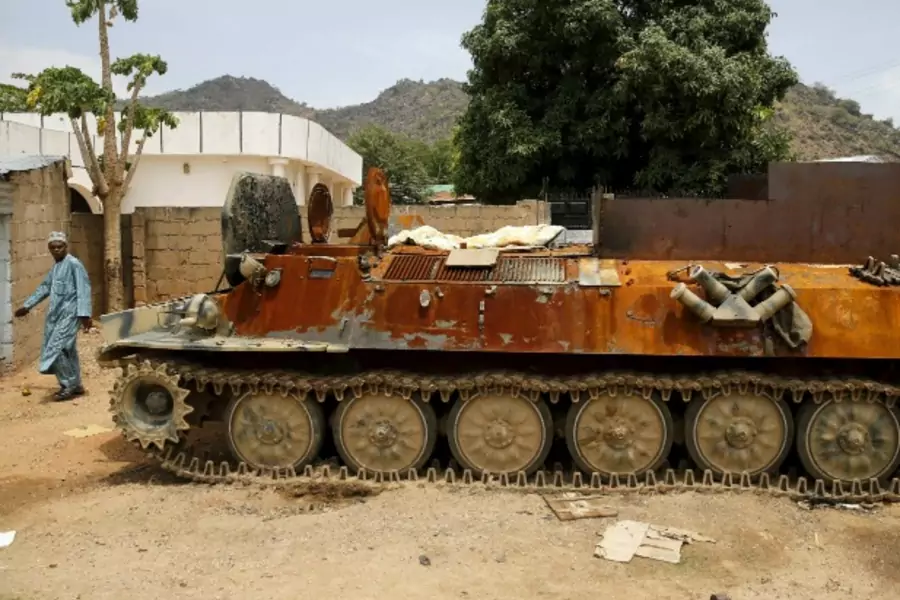More on:
After almost five years of reverses, the Nigerian federal government largely cleared Boko Haram fighters from the territories they occupied in Borno state–in about five weeks. The Nigerian government has given most of the credit to an allegedly invigorated Nigerian army. There has also been some acknowledgement of the contributions of Chadian and Nigerien forces. There has, however, been little recognition of the role of South African mercenaries, though they are likely to have been crucial to military success against Boko Haram.
In a series of blog posts on SOFREP.com, Jack Murphy interviews Eeben Barlow, the South African “proprietor” of Specialized Tasks, Training, Equipment, and Protection (STTEP), and provides more detail than had previously been seen on the involvement of the South African mercenaries.
Apparently, the Nigerian authorities contracted with STTEP in December to train a Nigerian unit to find and rescue the kidnapped Chibok School girls. But that mission soon morphed into an “aggressive strike force,” with STTEP personnel participating in combating Boko Haram.
Colin Freeman, in the Telegraph, concludes that the mercenaries “proved decisive in helping the military turn around its campaign against Boko Haram.”
Barlow does not say how much the Nigerian authorities paid his company. Earlier, unsubstantiated reports have said it was $400 per person per day. According to the SOFREP blog, STTEP numbered about 100 in Nigeria.
Barlow was a founder of the mercenary force Executive Outcomes, which was dissolved in 1998. In the six blog posts, Barlow is at pains to defend STTEP against charges of racism, and emphasizes that his force includes white, “browns,” and blacks. Barlow claims that his employees are multiracial, and included Namibians as well as South Africans. Some, he said, had been part of the apartheid-era South African Defence Force (SADF). Others, however, had fought against the SADF in Namibia and Angola.
Barlow’s interview helps–if tentatively–shed light on an issue that has been largely avoided by the Jonathan administration.
There has long been anecdotal evidence that the Nigerian military was demoralized, under-equipped, and under-trained. How did it turn itself around in only five weeks? The South African mercenaries would indicate that it did not. What changed is the presence of well-trained, well-equipped fighters that are skilled in warfare. No doubt, too, that the Chadian and Nigerien militaries played an important role, though Barlow’s posts say nothing about coordination with the two.
There are speculations that in recent months, Jonathan’s administration, unsuccessful in countering Boko Haram, panicked. Hence, the recruitment of mercenaries fits that time frame. In early February, the military postponed the elections, ostensibly because it was about to begin a campaign against Boko Haram. And, indeed, it did, only now with South African mercenaries.
Barlow observes that Boko Haram has retreated with some of its forces intact and equipped. He implies that the fight is not over.
It remains to be seen whether the incoming Buhari administration will retain the South Africans. It might be argued that the mercenaries are under the direct control of the Nigerian government. That might make them more attractive to Nigerian nationalist Buhari than “foreign” troops from Chad or Niger.
More on:
 Online Store
Online Store
